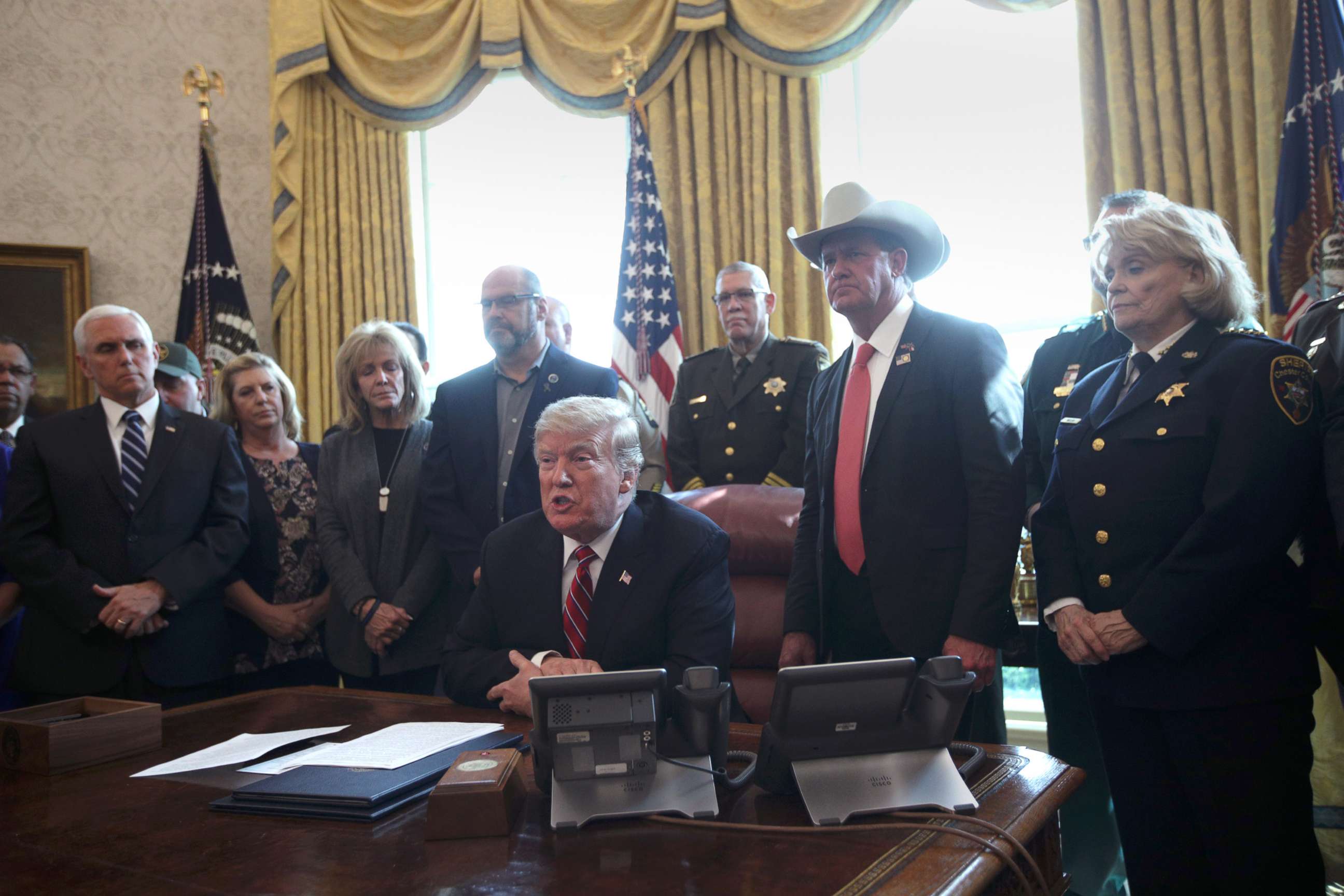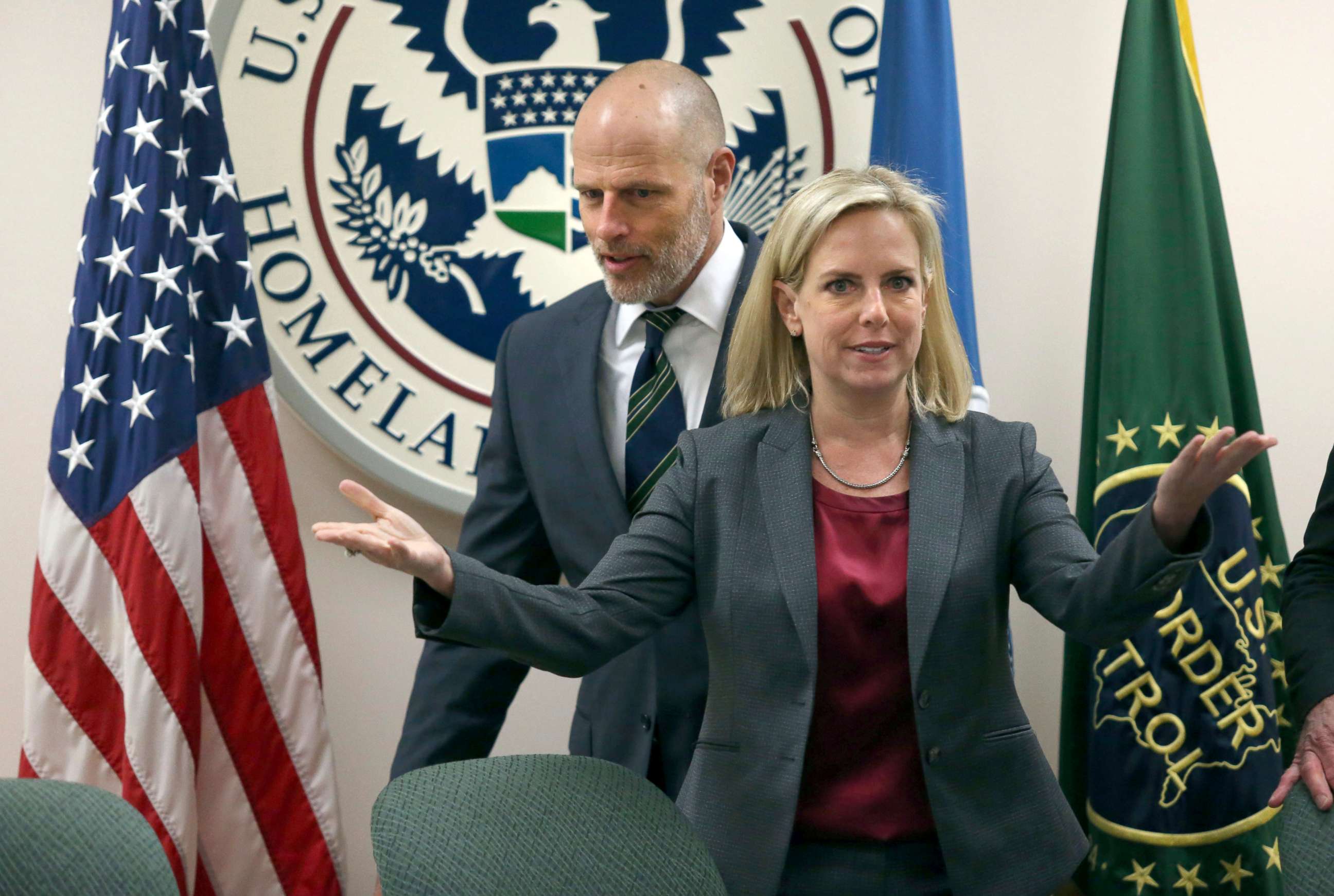Trump backs off threat to close border, gives Mexico 1-year warning
Mexico must curb surge of migrants and stop drug flow, the president said.
President Donald Trump on Thursday backed off his threat to close the southern border this week, instead giving Mexico a one-year warning to stop the flow of drugs and apprehend migrants and saying that if it didn't, he would close the border or place new tariffs on cars produced in Mexico.
“Mexico understands that we're going to close the border or I'm going to tariff the cars. I'll do one or the other and probably start off with the tariffs. That will be a very powerful incentive because Mexico has the strongest immigration laws anywhere in the world,” Trump said during a meeting at the White House.
“I don’t play games,” Trump said. “I’ll do it.”
The president said Mexico has been stepping up efforts to apprehend Central American migrants, but added more needs to be done. On Thursday, he added drugs as an additional condition for Mexico to meet – or else face consequences.
The president also acknowledged that his threats to impose auto tariffs could be curbed by his own U.S.-Mexico-Canada trade deal that has a provision preventing auto tariffs -- but said border security is more important than the USMCA.

Later on Thursday, Trump denied that he said he delayed his border threat by a year.
“So the border stays open at least for a year?” a reporter asked the president.
“I didn't say that,” Trump said and went on to explain his new threat that he would first impose tariffs before closing the border.
“We'll start with the tariffs and see what happens. But they are removing people out of Mexico, on the way up to the United States, and if you take a look, you'll see a big difference,” he said.
But the president also said he now doesn't think he will ever have to follow through with his threat to close the border.
Over the past week, the president has threatened to shut down the southern border but tamped down his rhetoric after Republicans and administration officials warned him of the potential economic ramifications. The United States and Mexico trade about $1.7 billion in goods daily, according to the U.S. Chamber of Commerce. Still, in the event the president decides to shut down the border National Economic Adviser Larry Kudlow said the administration is working on plans to exempt commerical trade.
"I don't think we'll ever have to close the border, because the penalty of tariffs on cars coming into the United States from Mexico, at 25%, will be massive," Trump said today, emphasizing his new threat to first impose tariffs before a closure.

Republican Sen. Ted Cruz from the border state of Texas warned that closing the border would be “devastating” to the economy.
“Closing the border to legal commerce would be devastating to Texas. Millions of jobs, in Texas and across the country, depend upon trade with Mexico, and the federal government shouldn’t do anything to jeopardize those jobs,” Cruz said in a statement.
“Of course, we should secure the border. We must,” he said. “But the answer is not to punish those who are legally crossing the border.”
On Friday, the president, along with Department of Homeland Security Secretary Kirstjen Nielsen, will travel to the U.S. -- Mexico border at Calexico, California, where they will tour the first replacement section of border fencing. The president will also hold a roundtable with local law enforcement officials.
DHS announced it would be taking a “disaster response” approach to border security and directed Customs and Border Patrol to deploy personnel to ports of entry to assist with the surge of migrants and humanitarian aid.
Last year, Nielsen unveiled the new section of replacement wall and placed a plaque on the U.S. side on which Trump’s name was engraved.
The fence has been celebrated as a symbol of progress for the Trump administration’s efforts to build a wall across the Southern border. But this is a renovated section of an already existing barrier that had been ordered to be built under the Obama administration.




